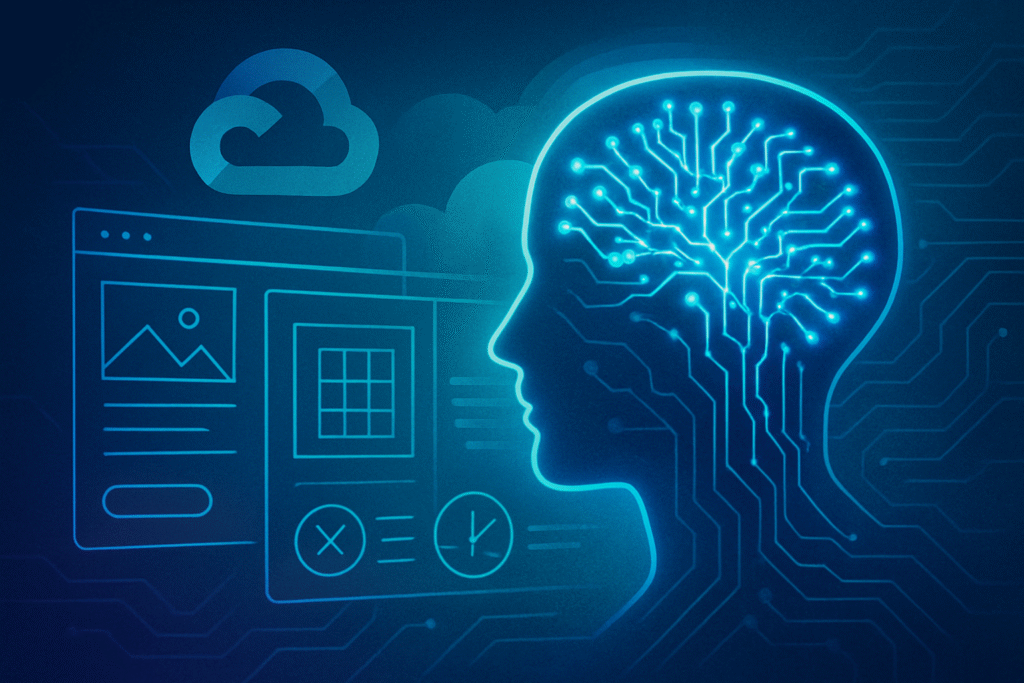
In a significant move reverberating across the technology landscape, Google (NASDAQ: GOOGL) has initiated a substantial shake-up within its Cloud division's design teams, resulting in over 100 layoffs in early October 2025. This restructuring is not merely a cost-cutting measure but a clear, strategic reorientation by the tech giant, explicitly driven by the accelerating impact of artificial intelligence on job roles, corporate efficiency, and the company's aggressive pursuit of leadership in the evolving AI ecosystem. The layoffs, primarily affecting user experience (UX) research and platform services, underscore a pivotal shift in how Google plans to develop products and allocate resources, prioritizing raw AI engineering capacity over traditional human-centric design functions.
This development signals a profound transformation within one of the world's leading technology companies, reflecting a broader industry trend where AI is rapidly reshaping the workforce. Google's decision to streamline its design operations and reallocate significant budgets towards AI infrastructure and development highlights a strategic imperative to remain competitive against rivals like Microsoft (NASDAQ: MSFT) and OpenAI. The company's leadership has openly articulated that AI tools are expected to automate and enhance many tasks previously performed by human designers and researchers, pushing for a more agile, AI-integrated workforce.
AI's Redefinition of Design: Technical Shifts and Strategic Reallocations
The recent layoffs at Google Cloud, which commenced around October 1-5, 2025, primarily targeted teams involved in quantitative user experience research and platform and service experience. Reports indicate that some cloud design groups saw reductions of nearly half their staff, with the majority of affected roles based in the United States. This aggressive restructuring follows earlier signals from Google's leadership, including voluntary exit packages offered throughout 2025 and a reduction in managerial positions since late 2024, all pointing towards a leaner, more AI-focused operational model.
The technical implications of this shift are profound. Google is actively redirecting funds and talent from what it now perceives as "people-focused roles" towards "raw engineering capacity required to support AI models and supercomputing." This means a substantial investment in data centers, advanced AI models, and computing infrastructure, rather than traditional UX research methodologies. The underlying assumption is that AI-powered tools can increasingly provide insights previously gleaned from human user research, and that AI-driven design tools can automate aspects of user experience optimization, thus enhancing efficiency and accelerating product development cycles. This approach differs from previous tech restructurings, which often focused on market shifts or product failures; here, the driver is a fundamental belief in AI's capacity to transform core product development functions. Initial reactions from the AI research community are mixed, with some applauding Google's bold commitment to AI, while others express concern over the potential for job displacement and the de-emphasis of human-centric design principles in favor of algorithmic efficiency.
Competitive Implications and Market Repositioning in the AI Race
This strategic pivot by Google holds significant competitive implications for major AI labs, tech giants, and nascent startups. Google stands to benefit by accelerating its AI development and deployment, potentially gaining a lead in areas requiring massive computational power and sophisticated AI models. By reallocating resources from traditional design to AI engineering, Google aims to solidify its position as a leader in foundational AI technologies, directly challenging Microsoft's aggressive integration of OpenAI's capabilities and other players in the generative AI space. The company's CFO, Anat Ashkenazi, had previously indicated in October 2024 that deeper budget cuts would be necessary in 2025 to finance Google's ambitious AI pursuits, underscoring the high stakes of this competitive landscape.
The disruption to existing products and services within Google Cloud could be both immediate and long-term. While the goal is enhanced efficiency and AI integration, the reduction in human design oversight might lead to initial challenges in user experience, at least until AI-driven design tools mature sufficiently. For other tech giants, Google's move serves as a bellwether, signaling that similar workforce transformations may be inevitable as AI capabilities advance. Startups specializing in AI-powered design tools or AI-driven UX analytics could see increased demand, as companies look for solutions to fill the void left by human researchers or to augment their remaining design teams. Google's market positioning is clearly shifting towards an AI-first paradigm, where its strategic advantage is increasingly tied to its AI infrastructure and model capabilities rather than solely its traditional product design prowess.
The Broader Significance: AI's Impact on Work and Society
Google's design team shake-up is more than just an internal corporate event; it's a microcosm of the broader AI landscape and the ongoing trends shaping the future of work. It starkly highlights the impact of advanced AI, particularly large language models and machine learning, on job roles traditionally considered immune to automation. The notion that AI can now assist, if not outright replace, aspects of creative and research-intensive roles like UX design and research marks a significant milestone in AI's societal integration. This fits into a broader narrative where companies are increasingly leveraging AI to enhance productivity, streamline operations, and reduce reliance on human headcount for certain functions.
However, this trend also brings potential concerns to the forefront, primarily regarding widespread job displacement and the need for workforce reskilling. While AI promises efficiency, the ethical implications of automating human-centric roles, and the potential loss of nuanced human insight in product development, are critical considerations. Comparisons to previous AI milestones, such as the automation of manufacturing or data entry, reveal a pattern: as AI capabilities expand, new categories of jobs emerge, but existing ones are inevitably transformed or rendered obsolete. The current situation suggests that even highly skilled, knowledge-based roles are now within AI's transformative reach, pushing societies to grapple with the economic and social consequences.
The Horizon: Future Developments and Emerging Challenges
Looking ahead, the implications of Google's strategic shift are likely to unfold in several key areas. In the near term, we can expect to see an accelerated push within Google (and likely other tech companies) to develop and integrate more sophisticated AI-powered design and research tools. These tools will aim to automate repetitive design tasks, generate user interface concepts, analyze user data for insights, and even conduct simulated user testing. The focus will be on creating AI-driven workflows that augment the capabilities of remaining human designers, allowing them to focus on higher-level strategic and creative challenges.
Long-term developments could include the emergence of entirely new job roles focused on "AI-human collaboration," "AI system oversight," and "prompt engineering for design." The challenge will be to ensure that these AI tools are truly effective and do not inadvertently lead to a degradation of user experience or a loss of empathy in product design. Experts predict that the tech industry will continue to navigate a delicate balance between leveraging AI for efficiency and preserving the unique value of human creativity and intuition. The ongoing need for ethical AI development, robust AI governance, and comprehensive workforce retraining programs will be paramount as these trends mature.
A Defining Moment in AI's Evolution
Google Cloud's design team shake-up is a pivotal moment in the history of AI, underscoring the technology's profound and accelerating impact on corporate strategy and the global workforce. The key takeaway is clear: AI is no longer just a tool for automation in manufacturing or data processing; it is now fundamentally reshaping knowledge-based roles, even those requiring creativity and human insight. This development signifies a bold bet by Google on an AI-first future, where efficiency and innovation are driven by intelligent algorithms and vast computational power.
The significance of this event in AI history lies in its clear demonstration of how a major tech player is actively restructuring its core operations to align with an AI-centric vision. It serves as a potent indicator of the long-term impact AI will have on job markets, demanding a proactive approach to skill development and adaptation from individuals and institutions alike. In the coming weeks and months, the tech world will be watching closely to see how Google's AI-driven strategy translates into product innovation, market performance, and, crucially, how it manages the human element of this technological revolution. The path Google is forging may well become a blueprint for other companies grappling with the transformative power of artificial intelligence.
This content is intended for informational purposes only and represents analysis of current AI developments.
TokenRing AI delivers enterprise-grade solutions for multi-agent AI workflow orchestration, AI-powered development tools, and seamless remote collaboration platforms.
For more information, visit https://www.tokenring.ai/.






